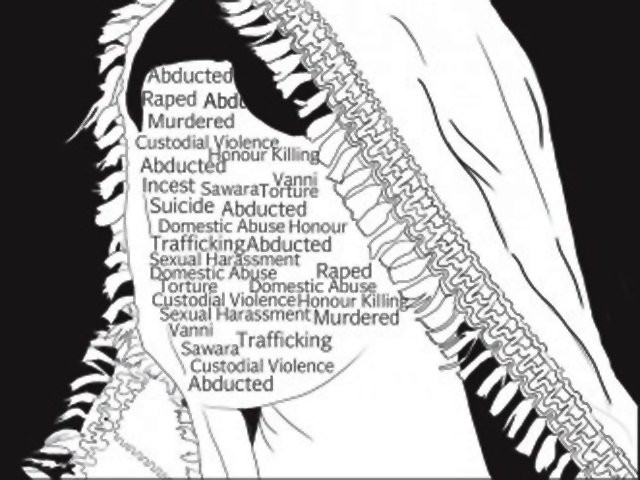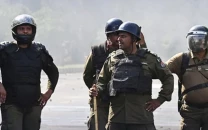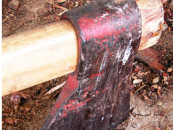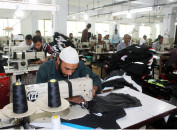Violence against women: 5,815 cases reported in 2013
Increase observed in some forms of violence, decrease in a few.

Increase observed in some forms of violence, decrease in a few. PHOTO: FILE
While reported violence against women in the Punjab in 2013 increased by 17 per cent over 2012, there was a 25 per cent decrease reported in some other forms of violence, Aurat Foundation statistics from an upcoming annual report on violence against says.
According to the data compiled by Abid Ali, the provincial monitoring officer at Aurat Foundation, at least 5,815 cases of violence against women were reported in the Punjab in 2013.
He said there were 1,766 abductions, 846 murders, 486 suicides, 227 honour killings, 846 rape, 17 sexual assault cases, 35 acid attacks, 33 burnings, 213 beatings and tortures and 1,346 miscellaneous cases.
The data also revealed that 2,575 cases of violence were reported in the first six months of 2013, and 3,240 during the rest of the year. FIRs were registered in 4,681 cases. In 120 cases victims of violence did not file a complaint.

According to the data, there was a 45 per cent decrease in reported cases of domestic violence compared to 2012. Reported number of acid attacks, too, decreased by 13 per cent and burning cases by 19 per cent.
There was an 18 per cent increase in kidnappings, one per cent in murders, 10 per cent in suicides, 11 per cent in rape, 17 per cent in sex assault and 29 per cent in ‘miscellaneous cases’ as compared to 2012.
As many as 6,216 women were victimised in these cases in 2013, with 2,770 from January to June and 3,446 from July to December.
As many as 2,784 of these women were unmarried, 2381 were married, 90 were divorcees and 90 widows.
Of these, 1,049 women were between 0 and 18 years of age, 480 between 19 and 36 years of age and 114 above 36 years old.
District-vise breakup
Of the total cases, 1,098 were reported the Faisalabad district, 598 in Lahore district, 430 in Rawalpindi district, 374 in Sargodha district, 294 in Rahim Yar Khan district, 270 in Okara district, 248 in Sheikhupura district, 167 in Kasur district, 166 in Gujrat district, 161 in Muzaffargarh district, 156 in Pakpattan district, 154 in Sialkot district, 147 in Toba Tek Singh district, 134 in Sahiwal district, 118 in Dera Ghazi Khan district, 110 in Jhang district, 103 in Gujranwala district, 98 in Chakwal district, 92 in Multan district, 82 in Bahawalnagar district, 79 in Rajanpur district, 73 in Nankana Sahib, 73 in Khanewal, 63 in Chiniot, 60 in Layyah, 52 in Vehari, 50 in Lodhran, 48 in Mandi Bahauddin, 47 in Attock, 46 in Jhelum, 39 in Bhakkar, 37 in Hafizabad, 28 in Mianwali, 26 in Khushab, and 25 in Narowal.
Tip and the iceberg
Speaking to The Express Tribune, women’s rights activist Fauzia Viqar said that the problem with reports on violence against women was that the numbers only reflected the tip of the iceberg.
She said most cases of violence were not reported.
“For justice’s sake, the most imperative thing is to report these cases,” she said.
In order to get an accurate picture, she said, effective data compilation and analysis of violence against women was necessary.
“We need to have an effective support structure for survivors and to have laws in place that deal with domestic violence,” she said.
Shirkat Gah Director Gulnar Tabassum said the wide prevalence of violence against women was mainly because of the patriarchal mindset dominant in the society.
She said cultures and some religious views also denied women equal rights.
Salman Abid, the Strengthening Participatory Organisation regional head, said while it was great that the government was passing laws related to sexual harassment, acid attacks and women representation, these laws still needed enforcement mechanisms, which, were regrettably weak. He said that after the 18th Amendment, one of the roles of the provincial governments was to ensure women development.
Still, he said, many cultural, social, political, religious and economical biases against women were dominant in the country.
“We need a more proactive implementation on women agenda from government and other stakeholders.”
Published in The Express Tribune, March 7th, 2014.
.........................................................................................................................................................
[poll id="1296"]


1725362185-0/Untitled-design-(11)1725362185-0-208x130.webp)
















COMMENTS
Comments are moderated and generally will be posted if they are on-topic and not abusive.
For more information, please see our Comments FAQ